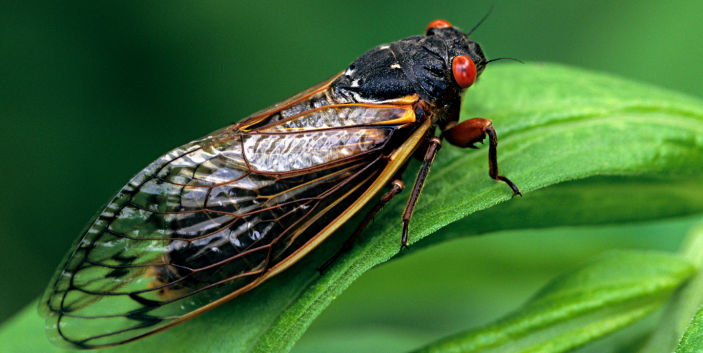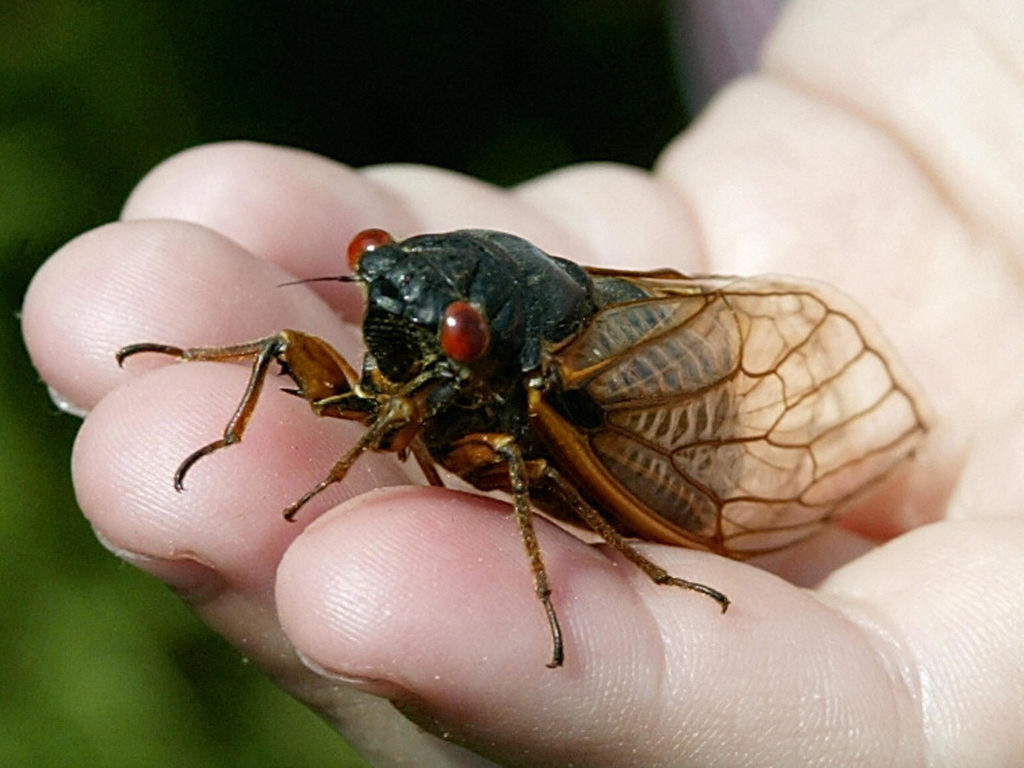How do you prepare for a swarm of cicadas? Why you should never kill them? What to do if you one gets into your house……

The following written content by Korin Miller
Millions of cicadas are expected to emerge any day now after spending 17 years underground. The bulbous-eyed bugs will be everywhere in parts of the Eastern United States, especially Maryland, Indiana, and Pennsylvania. In fact, up to 1.5 million periodic cicadas from Brood X will pop up per acre in certain regions of these states. And that’s on top of the annual cicadas that come out every summer.
Cicadas don’t just make a lot of noise—they can also take out young trees, vines, and saplings. “Cicadas will lay their eggs in living twigs,” says Nancy Troyano, Ph.D., a board-certified entomologist and director of operations education and training for Ehrlich Pest Control. “A female will lay as many as 600 eggs. Because of the sheer numbers of periodical cicadas, heavy egg-laying may result in twig die off or ‘flagging’ in young branches.”

Smaller trees are the most at risk, says Josh Matta, an entomologist for Spectrum Garden Brands. “Small transplanted trees, particularly fruit trees, commonly have a trunk diameter small enough that egg slits made in the trunk may result in the tree snapping off,” he says.
But, Troyano adds, cicadas are “little threat” to more mature trees. Cicadas also leave behind cast skins—brown husks that are discarded as young cicadas (nymphs) grow. When a cicada invasion strikes, you can find these molts all over the place.
Not exactly thrilled with the idea of having cicadas on your property, or possibly in your home? Here’s what you can do to prepare for a possible cicada swarm—and why you should avoid harming them. Read more from Prevention.





